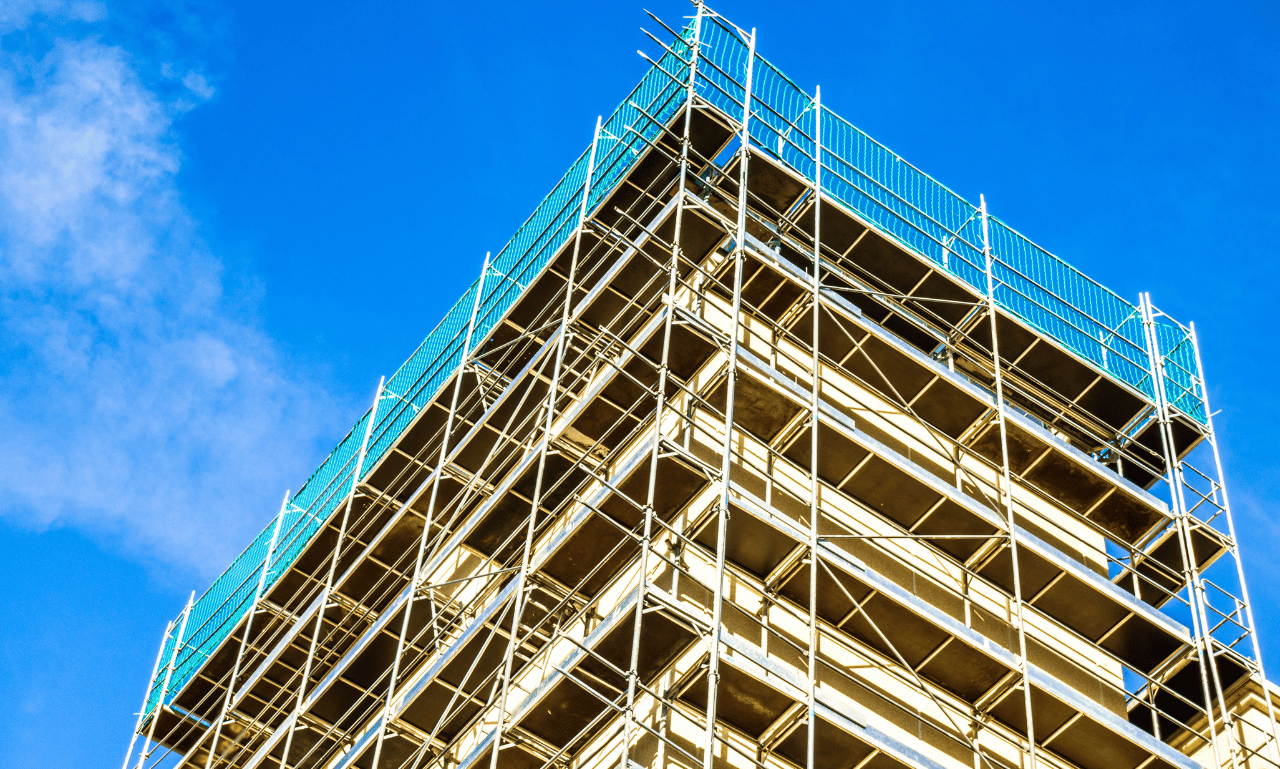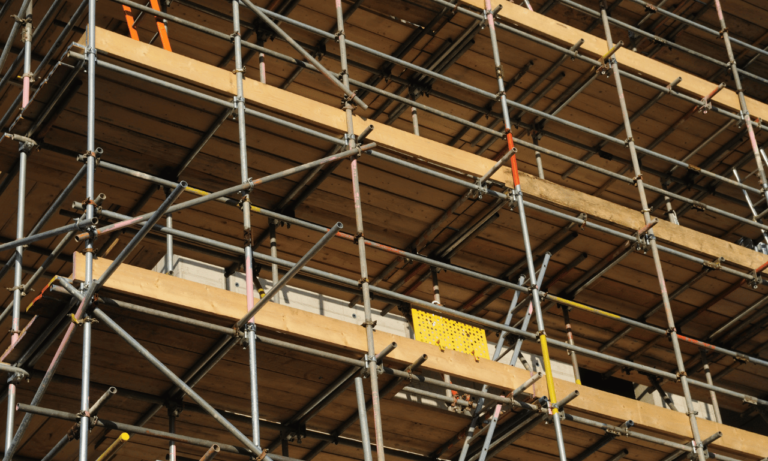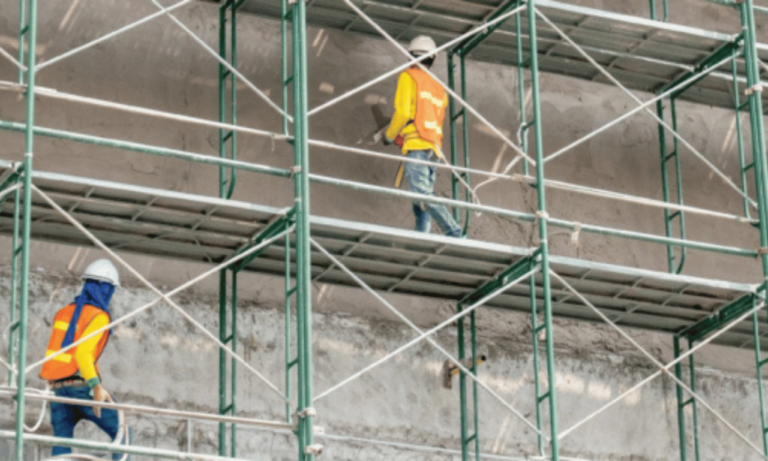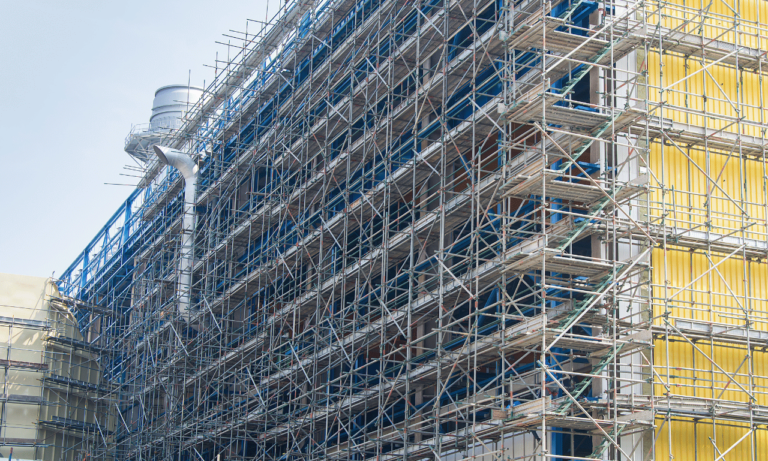Phone:
(+65)8319-0742
Enabling the rise of awe-inspiring skyscrapers and intricate architectural endeavors, Load-Bearing Tower Scaffolding remains the cornerstone of robust construction support. This guide delves into the world of heavy-duty scaffolding, highlighting the unmatched reliability and essential role that these systems play in construction scaffolding. Through industry-leading scaffolding solutions, we are not just building structures; we are ensuring safety at every elevation. As the desire for taller and more complex buildings increases, the reliance on tower scaffolding to provide sturdy platforms for workers grows ever more critical, perfecting the balance of strength and versatility in scaffolding systems.
At the heart of these towering feats is the Load-Bearing Tower Scaffolding, a true stalwart of construction technology. It provides the crucial extra support needed to carry out high-level tasks with confidence and stability. From industrial conglomerates to local development projects, these scaffolding solutions offer the necessary foundation to skyrocket productivity while fastening a safety harness around the risk of workplace setbacks.
Key Takeaways
- Understand the indispensable role of Load-Bearing Tower Scaffolding in providing robust construction support.
- Recognize the importance of heavy-duty scaffolding in ensuring a secure and efficient work environment.
- Discover the versatility and reliability of tower scaffolding in various industrial and commercial projects.
- Learn how the correct implementation of scaffolding systems can significantly reduce workplace injury risks.
- Explore how advanced scaffolding solutions contribute to the construction industry’s growth and safety standards.
- Acknowledge the need for integrating heavy-duty scaffolding to meet modern construction demands.
Understanding Load-Bearing Tower Scaffolding Fundamentals
Essential to high-rise construction and industrial applications, reliable scaffolding forms a part of every project manager’s checklist. Load-bearing capacities, safety, and structural integrity are cornerstones of a robust construction site, and tower scaffolding systems play a crucial role.
Tower scaffolding is revered for its strength and versatile scaffolding configurations, catering to various industrial needs. Building upon a legacy of durable construction, these systems prioritize worker safety and efficiency.
Defining Load-Bearing Capacity and Safety Factors
The foundation of industrial scaffolding relies on understanding safety factors and load-bearing capacities. A standard reliability measure, a 4 to 1 safety factor, is often instated, providing ample cushioning against the possibilities of unforeseen loads or stresses, thus ensuring the safeguarding of both personnel and materials.
Difference Between Tower Scaffolding and Other Systems
Distinguishing itself from other scaffolding types, tower scaffolding boasts a unique combination of height accessibility and stable work platforms. Unlike other scaffolding systems, it is specifically fashioned for heavy-duty tasks with reliable steel scaffolding, or for tasks demanding quick mobility and assembly with lighter aluminum options.
The Role of Metal Pipes and Tubes in Scaffold Structures
Metal pipes and tubes are fundamental in constructing resilient scaffold structures. Steel variants present the backbone for structures shouldering heavy-weight operations, while aluminum pipes and tubes afford lightness and ease of assembly, making them suitable for less intensive endeavors.
| Scaffolding Type | Material | Use-Case | Pros | Cons |
|---|---|---|---|---|
| Tower Scaffolding | Steel | Heavy-duty industrial work | High strength and durability | Heavier, challenging mobility |
| Modular Scaffolding | Aluminum | Light-duty, dynamic projects | Lightweight, easy to assemble | Lower load-bearing capacity |
Keeping Safety First: Protocols for Scaffold Use
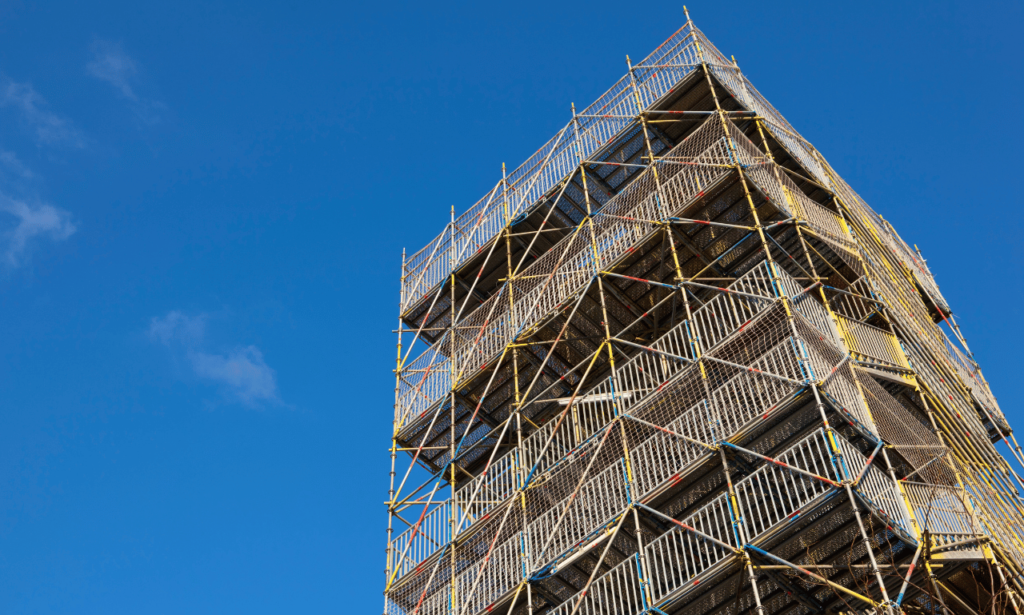
At the heart of construction scaffolding efficiency is an unwavering commitment to scaffolding safety. A series of deliberate and rigorously enforced safety protocols not only protects the well-being of workers but also advances the progress of construction projects by minimizing accidents and subsequent delays. Effective safety measures pivot on the cornerstone of using personal protective equipment (PPE).
PPE is the first line of defense against on-site injuries, with items like hard hats, non-slip footgear, and high-visibility vests being non-negotiable necessities. Integral too is fall protection gear, which includes safety harnesses and lanyards that are vital for work carried out above ground level. Such equipment should not just be available but must be in impeccable condition and utilized consistently by all personnel on the scaffolding.
- Hard hats to protect from falling objects
- Non-slip safety boots to prevent slips and trips
- High-visibility vests for better detection of workers
- Safety harnesses and lanyards as fall arrest systems
Keeping a construction site free of debris and maintaining clean work platforms on the construction scaffolding are essential tasks that reduce tripping hazards and the risk of objects falling from height. Daily inspections play a pivotal role in reinforcing scaffolding safety; such examinations must be conducted by competent individuals who can identify potential hazards and rectify them promptly. The goal is to ensure a hazard-free environment for every work shift, thereby amplifying overall site safety and operational efficiency.
Within this scaffold safety framework, clear communication serves as a critical component. Accurate signage and guidance about the state of scaffolding, load capacities, and entry points help avoid confusion and misinformation, guiding workers toward safer practices. By prioritizing these safety protocols, organizations can substantially curtail the occurrence of construction-related accidents and uphold the highest standards of work environment safety.
Load-Bearing Tower Scaffolding: Ensuring Stability and Support
When constructing or utilizing scaffolding, particular emphasis must be placed on load distribution and scaffold stability to uphold the structural integrity of the installation. Factors such as balanced weight placement and adherence to manufacturer guidelines are foundational to scaffold safety and longevity. In furtherance of these objectives, it’s essential to both acknowledge and implement strategies that address the myriad of impacts engendered by environmental conditions and to regularly conduct scaffold maintenance and comprehensive safety checks as preventative measures against potential hazards.
Correct Load Distribution to Prevent Structural Failures
The principle of equal load distribution is a cornerstone in the quest for scaffold stability. Uneven or excessive loads are a recipe for disaster, potentially leading to catastrophic structural failures that can compromise both safety and productivity. To achieve optimal distribution, one must ensure that the scaffolding is erected on solid ground, utilizing leveling components as necessary and deploying outriggers to disperse the load efficiently.
Impact of Environmental Conditions on Scaffolding Stability
Environmental conditions can drastically influence the scaffolding stability. From oxidation-induced rust to weather-related scaffolding hazards such as high winds or accumulation of snow and ice, the elements can alter and degrade scaffolding properties. This necessitates the incorporation of protocols that ensure regular evaluation and assessment of scaffolds, particularly after exposure to such conditions.
Preventive Measures for Maintaining Scaffold Integrity
Proactive approaches are paramount when it comes to maintaining scaffold integrity. Instituting a routine of preventive measures, such as frequent inspections, goes a long way in diagnosing early signs of wear or damage, be it from environmental degradation or impact from work-related activities. Proximity to heavy machinery should be managed adequately, and safety tags on scaffolds must be clearly visible and up-to-date, reflecting current conditions. Additionally, the use of Ground Fault Circuit Interrupters (GFCIs) with electrical tools on or near scaffolds can prevent electrical incidents, further safeguarding the structure and those who depend on it. Through conscientious scaffold maintenance and regular safety checks, a secure environment is maintained for all users.
The Importance of Compliance: Adhering to Regulations and Standards
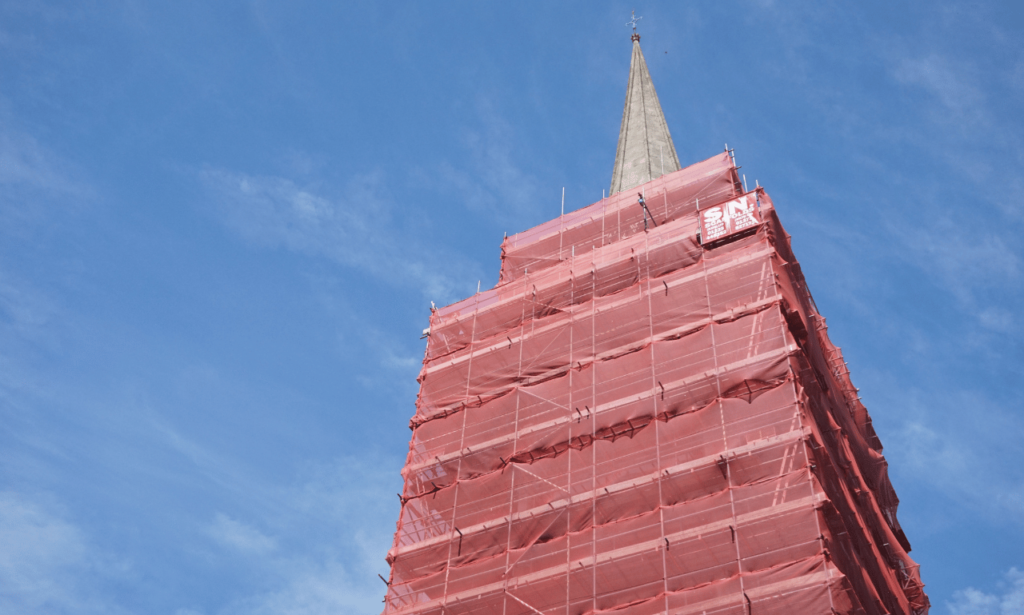
In the realm of construction scaffolding, compliance isn’t just a bureaucratic hoop to jump throughâit’s a pivotal foundation for safeguarding workers and ensuring the structural integrity of scaffolding systems. Observance of both OSHA regulations and EN1004 standards is non-negotiable for achieving scaffolding compliance. Furthermore, scaffolding safety is directly influenced by the rigorous adherence to manufacturer guidelines during scaffolding assembly. Let’s delve into the critical regulations and standards that uphold safety and efficiency throughout scaffolding operations.
Understanding OSHA Requirements for Scaffolding
The role of OSHA in scaffolding is to implement a baseline of scaffolding safety measures to protect against construction-related hazards. These OSHA regulations include comprehensive guidelines that cover the gamut of scaffold design, erection, and dismantlement. Stringent inspections and load capacity requirements are cornerstones of this regulatory framework, mandating that scaffolds support at least four times the maximum intended load to prevent accidents and ensure construction scaffolding compliance.
In-Depth Look at EN1004 Standards for Mobile Access Towers
The EN1004 standards play a critical role in the safety of mobile access towers, setting forth a sophisticated system of specifications. These European-developed guidelines emphasize that proper assembly, regular checks, and strict adherence to loading protocols are indispensable for the operational integrity of these access solutions. Compliance with EN1004 standards ensures that mobile towers offer workers a reliable and safe platform from which to perform their duties at height.
Implementing Manufacturer's Guidelines for Scaffolding Assembly
Heeding manufacturer guidelines during the scaffolding assembly process is a pivotal measure to ensure every component functions as intended. From the correct positioning of braces and anchors to the appropriate use of fastening devices, these guidelines serve as a vital manual to maximize scaffolding safety and functionality. As the manufacturers have extensively tested their products, adherence to their directives translates to an elevated state of scaffolding safety and efficiency on-site.
Essential Tips for Scaffolding Erection and Maintenance
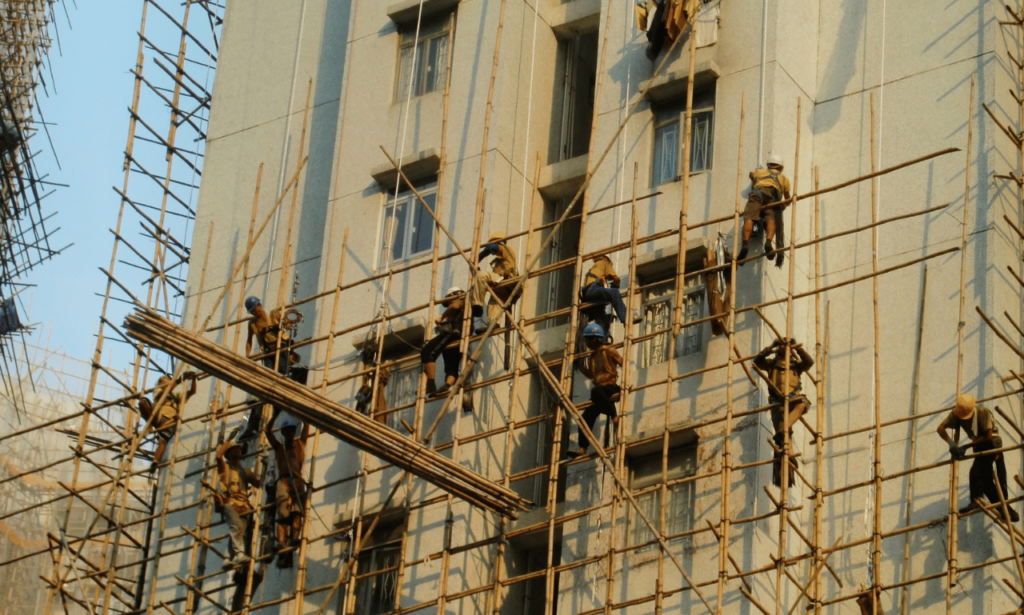
The process of scaffolding erection and the ongoing scaffolding maintenance are critical operations that demand strict adherence to safety precautions and the expertise of licensed scaffolding professionals. To uphold safety standards and enhance operational longevity, scaffolding should be erected in compliance with industry best practices and maintained diligently.
Ensuring proper training for workers is vital. They should be knowledgeable in safe climbing techniques and always maintain three points of contact with the scaffold to prevent falls. Unwarranted modifications to scaffolding can be hazardous, thus, any adjustments should only be made with proper authorization and oversight.
Here are key guidelines to follow:
- Always have scaffolding installed by licensed professionals
- Conduct regular inspections to ensure scaffolding maintenance is up-to-date
- Enforce a strict protocol for safety precautions at the jobsite
Moreover, maintaining detailed records of scaffold inspections and care can play a significant role in ensuring that any potential issues are addressed promptly. The table below summarizes essential maintenance checks that should be performed on a regular basis:
| Check | Description | Frequency |
|---|---|---|
| Structural Assessment | Inspection of all components for signs of wear, damage, or excessive load | Daily before use |
| Connection Points | Examination of joints, couplers, and fasteners to ensure secure connections | Weekly |
| Foundation Check | Evaluation of the ground supporting the scaffolding for settling or shifting | After any inclement weather |
| Rust and Corrosion Inspection | Inspection for any signs of rust or corrosion that could compromise the structure’s integrity | Monthly |
| Load Capacity Verification | Review of load ratings to prevent overloading and ensure compliance with safety standards | Each shift change |
By following these critical tips for scaffolding erection and scaffolding maintenance, construction projects can significantly mitigate the risk of accidents, ensuring a safer working environment for all involved. Remember, periodic training refreshers and active communication about safety precautions are indispensable for fostering a culture of safety on-site.
Conclusion
In summing up this guide, the pivotal role of load-bearing tower scaffolding within the realm of industrial scaffolding cannot be overstated. Its irreplaceable function as a reliable scaffolding solution underscores the critical nature of safety and efficiency in robust construction support endeavors. By adhering steadfastly to regulatory standards, facilitating diligent maintenance, and insisting on premium materials, we ensure that the scaffolding systems operated in the construction sector are not only reliable but optimized for the challenging demands of the industry.
Effective construction support hinges on the strength and reliability of the scaffolding systems at use. The discussions underscored here highlight that, whether for small-scale projects or expansive industrial ventures, the integrity of load-bearing tower scaffolding is paramount. Meticulous application of safety precautions and maintenance rituals imbues these structures with the resilience necessary to withstand the diverse challenges presented by construction sites.
Conclusively, by integrating these fundamentals of industrial scaffolding into everyday practice, construction professionals and companies alike solidify their commitment to upholding exemplary standards of safety and efficiency. In doing so, they not only protect the well-being of their workforce but also bolster the overall success and reliability of their construction projects.
FAQ
What is Load-Bearing Tower Scaffolding?
Load-Bearing Tower Scaffolding is a type of heavy-duty scaffolding that provides crucial support for various construction activities, allowing workers to access and carry out tasks safely at elevated heights. This robust construction support system is essential for maintaining security and efficiency, especially in industrial applications where reliability and versatility are of utmost importance.
What makes Tower Scaffolding different from other scaffolding systems?
Tower Scaffolding differs from other systems due to its design, which prioritizes stability and support for work at various heights. It is typically made from durable materials like steel or aluminum. Steel is used for heavy-duty work and aluminum for lighter projectsâeach contributing to the tower’s durability and stability.
Why are metal pipes and tubes fundamental to scaffold structures?
Metal pipes and tubes form the basic framework for load-bearing tower scaffolding, providing resilience and durability. The choice between steel and aluminum for these components depends on the project’s demands. Steel is preferred for its strength in heavy-duty tasks, while aluminum is used for its lightweight and ease of assembly in less demanding tasks.
What are critical scaffolding safety protocols?
Scaffolding safety protocols include utilizing personal protective equipment, maintaining a clean work platform, performing daily safety inspections by competent personnel, and adhering to proper fall protection. These practices help maintain a hazard-free work environment and prevent worksite accidents.
How does correct load distribution prevent structural failures in scaffolding?
Ensuring correct load distribution is critical to prevent overloading and potential structural failures in scaffolding structures. It is vital to follow the manufacturer’s load-bearing guidelines and use proper weight distribution techniques, such as outriggers and level bases, to maintain scaffolding integrity and worker safety.
What impact do environmental conditions have on scaffolding stability?
Environmental conditions like high winds, rain, snow, and rust from oxidation can severely impact the stability and safety of scaffolding structures. Regular inspections and avoiding the use of scaffolding during extreme weather are key to mitigating these risks.
How can scaffold integrity be maintained?
Scaffold integrity can be maintained by taking preventive measures that include regular inspections for damage, ensuring proper distance from heavy machinery, using scaffold tags to communicate conditions, and employing GFCIs for electrical tools. Such measures help prevent accidents and degradation of scaffolding over time.
What are OSHA requirements for scaffolding?
OSHA requirements for scaffolding include that it must be erected under the supervision of a qualified professional and should support at least four times the maximum intended load. These regulations are in place to ensure the safety of workers and the proper use of scaffolding in the construction industry.
What does the EN1004 Standard entail for mobile access towers?
The EN1004 Standard provides guidelines for the construction and safe use of mobile access towers, including proper assembly, regular safety checks, and adherence to specified load capacities. Compliance with this standard helps minimize the risk of workplace accidents.
Why is it important to follow the manufacturer’s guidelines for scaffolding assembly?
Adhering to the manufacturer’s guidelines for scaffolding assembly is crucial for ensuring worker safety and the structural stability of the scaffolding. Guidelines typically include specifications for bracing, fasteners, and other critical components of the scaffolding structure.
What are the key tips for the erection and maintenance of scaffolding?
Key tips for erection and maintenance of scaffolding include providing training for safe climbing practices, maintaining three points of contact, avoiding unauthorized modifications, and ensuring only licensed professionals handle scaffolding-related tasks. Proper training and safety adherence reduce potential scaffold-related incidents.

